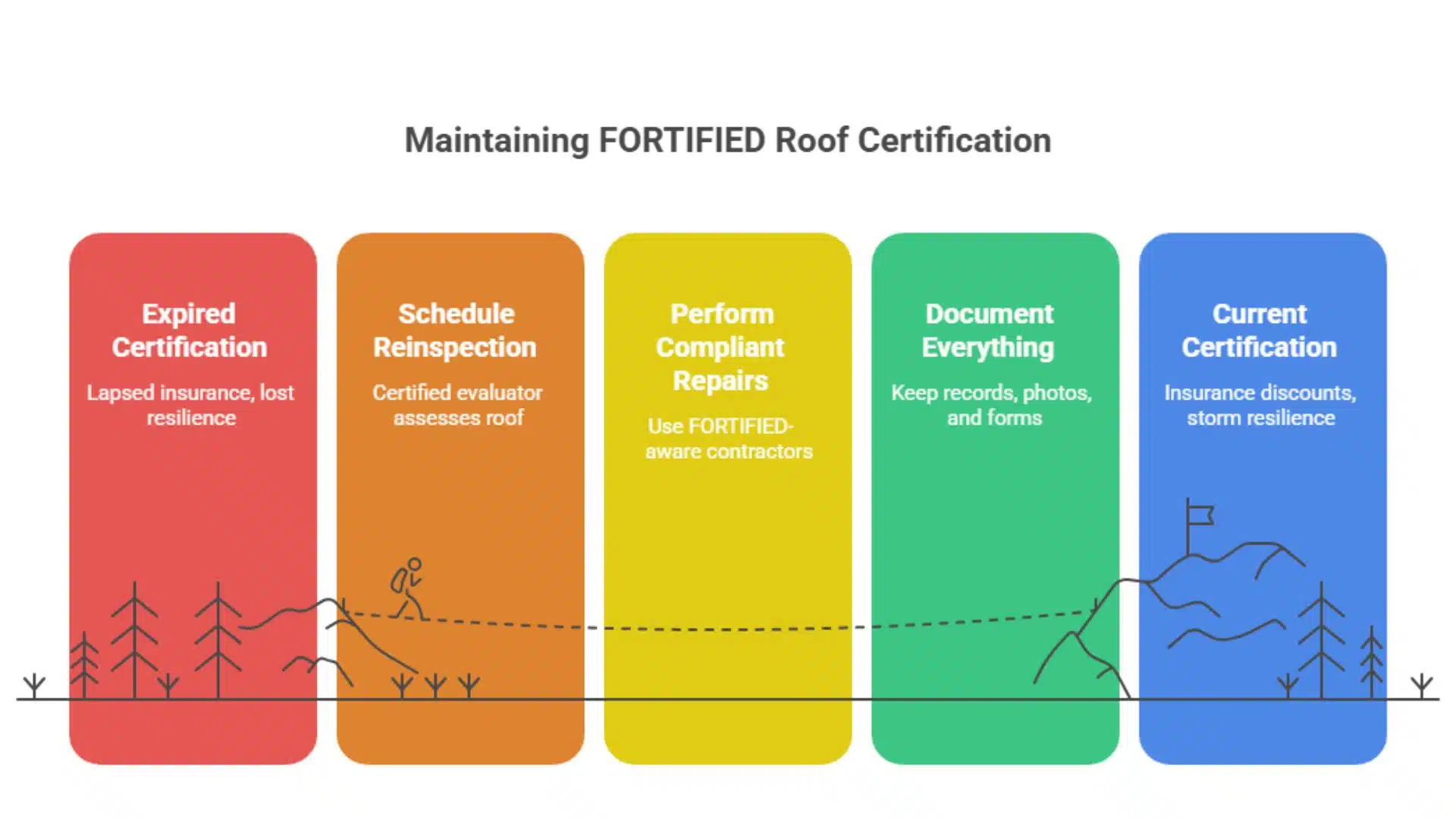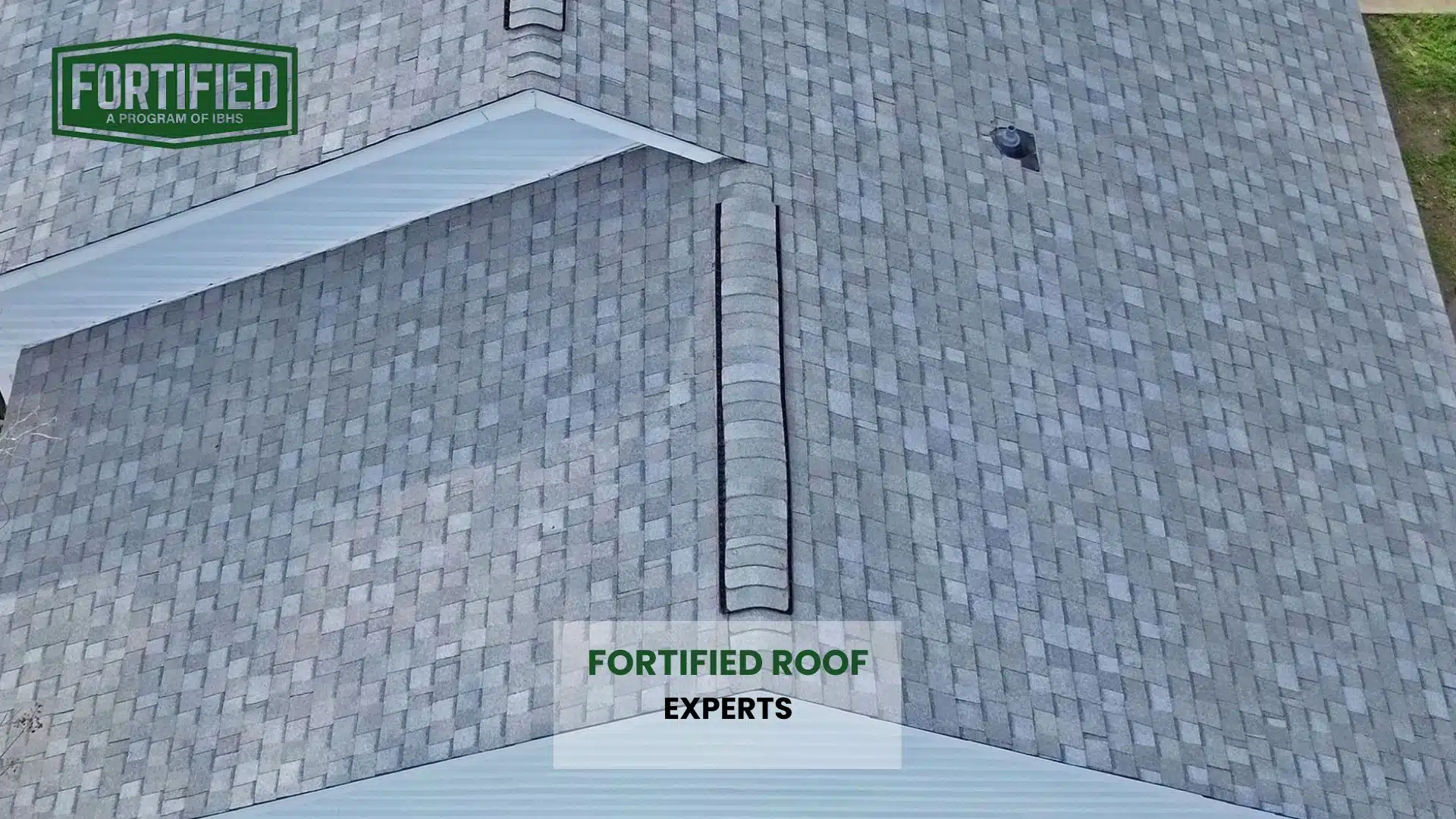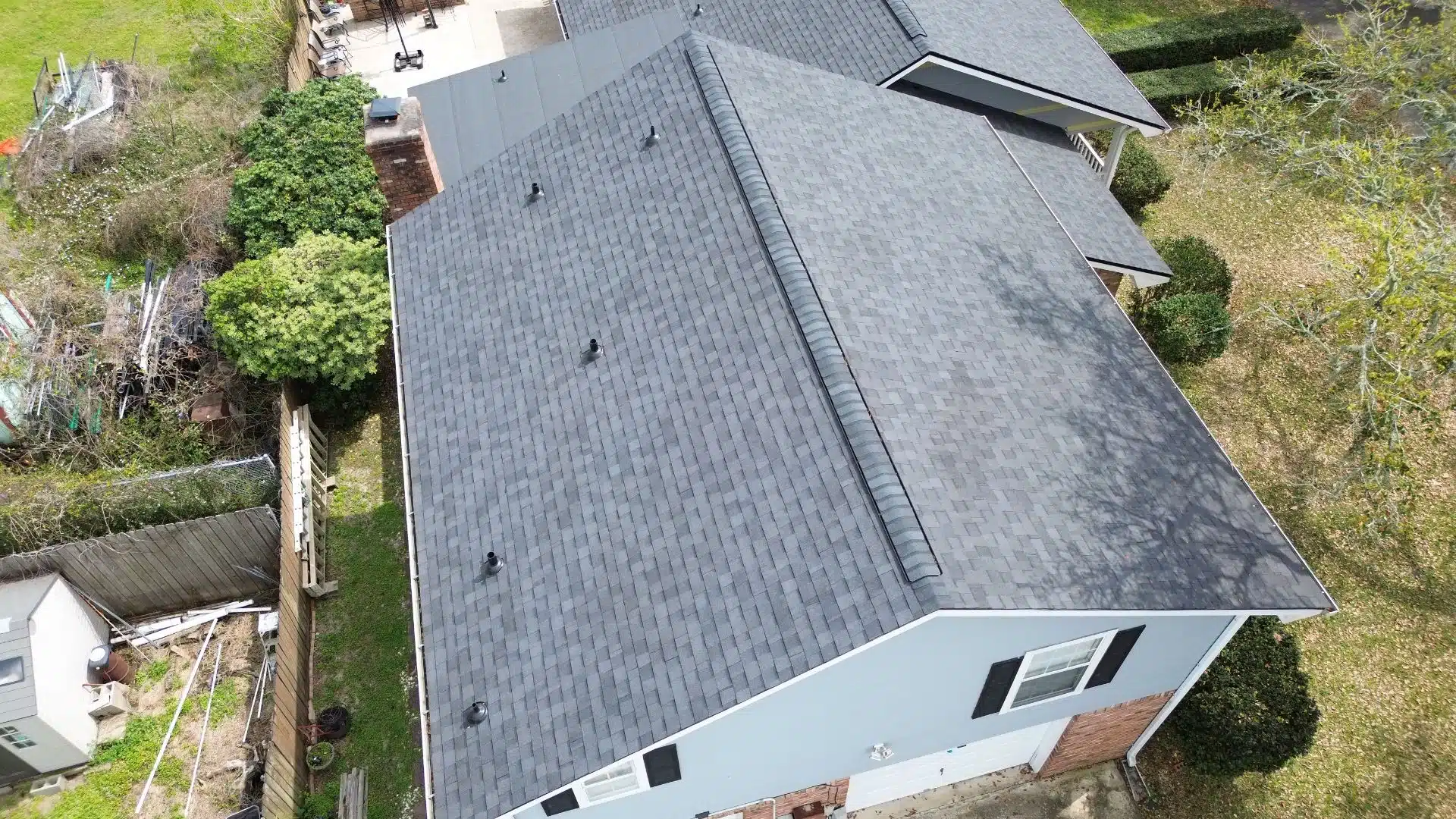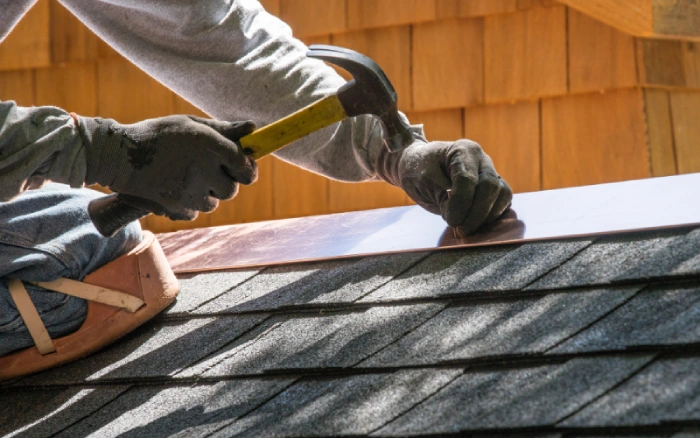Protection Requires Participation
A FORTIFIED Roof isn’t just a roofing upgrade—it’s a commitment to proactive protection. Designed to endure hurricane-force winds, pounding rain, intense UV exposure, and salt-heavy air, it’s built with resilience at its core. But like any high-performance system, its longevity depends on regular attention.
For homeowners on the Mississippi Gulf Coast, where weather isn’t just unpredictable—it’s aggressive—routine maintenance isn’t optional. It’s essential. A FORTIFIED Roof can reduce storm-related losses and lower insurance premiums, but only when kept in proper working order.
This blog outlines, “What Maintenance Does a Fortified Roof Require on the MS Gulf Coast?” The exact maintenance required to preserve your roof’s performance and keep your FORTIFIED certification up to date. If you’re searching for a roofer near me with experience in FORTIFIED systems, you’ll also learn how to find the right professionals for the job.
Biannual and Post-Storm Inspections
A. Why Twice-Yearly Checks Matter
The best times for scheduled maintenance on your FORTIFIED Roof are in the spring—after winter storms—and in late summer—before peak hurricane season. These transitional periods allow you to spot early signs of damage and prepare for the extremes ahead.
Look for issues like cracked or missing shingles, sagging rooflines, dark water stains on ceilings, or damp attic insulation. Even minor signs may signal deeper structural problems, particularly in homes built near the coast. Spotting them early helps preserve both your warranty and your FORTIFIED status. A qualified roofer Gulfport MS residents trust can catch problems that may be invisible from the ground.
B. After the Storms Hit
Don’t wait for a leak to appear before checking your roof after a major storm. Hurricanes and tropical depressions often cause damage that takes days—or weeks—to reveal itself.
Inspect your roof for wind-lifted shingles, cracked flashing, bruised shingles from hail, or salt-induced corrosion. Even small breaches can allow water to seep in and create mold or wood rot beneath your roofing system.
C. When to Call a Pro
An annual inspection by a licensed roofing contractor trained in FORTIFIED standards isn’t just smart—it’s strategic. These pros can identify subtle weaknesses that undermine storm resistance or void your certification.
Use a certified FORTIFIED Evaluator who understands the inspection points laid out by the Insurance Institute for Business & Home Safety (IBHS). Not every contractor is qualified, so ask upfront.
Debris Removal & Gutter Maintenance
A. Roof and Gutter Clearing
One of the simplest yet most overlooked steps in roof care is keeping it clean. Gulf Coast storms routinely dump debris across roofs—branches, pine needles, and leaves that trap moisture and invite rot.
Clogged gutters cause water to pool near flashing or leak into soffits and fascia. Monthly cleanings are recommended, and immediate clean-up is vital after storms. Proper water flow extends your roof’s lifespan and helps it perform during high winds.
B. Tree Trimming Tips
Trees near your roof may provide shade, but they also pose a serious threat during hurricane season. Limbs should be trimmed back at least 6–10 feet from the structure. This reduces the chance of damage during high winds and keeps squirrels or raccoons from nesting near vulnerable areas like vents or flashing.
A proactive roofing company search should lead you to a contractor who includes vegetation clearance in their inspections.
Flashing & Sealant Checks
A. Flashing Maintenance
Flashing is one of the first components to fail under Gulf Coast conditions. It surrounds chimneys, skylights, and roof edges—where leaks love to sneak in. Salt in the coastal air speeds up corrosion, while heavy rains test the integrity of every seam.
Check for rust, lifting edges, or denting, and repair as needed. Professional-grade flashing installed by a roofer Gulfport MS locals rely on can help extend life expectancy and minimize moisture damage.
B. Sealant Surveillance
High UV exposure along the MS Gulf Coast can cause caulking and sealants to dry out, crack, or blister. Once compromised, they no longer protect joints or vent penetrations—leaving your roof vulnerable.
Reapply weather-resistant sealant as part of your biannual maintenance checklist. Stick to IBHS-recommended materials and document every update to retain your FORTIFIED designation.

FORTIFIED Certification: Keeping It Current
A. 5-Year Reinspection Rule
Your FORTIFIED Roof isn’t certified for life. Every five years, it must undergo a full evaluation to remain eligible for insurance discounts and storm-resilience programs.
This inspection must be performed by a certified evaluator and documented per IBHS guidelines. Don’t wait for the five-year mark—schedule six months in advance to allow time for potential repairs.
B. Repair Documentation
Any changes to your roof—no matter how small—must be performed by contractors familiar with FORTIFIED protocols. Keep detailed receipts, before-and-after photos, and evaluator forms.
Failure to document may result in loss of certification or rejected insurance claims after storm damage. Hire a trusted roofer Gulfport MS homeowners recommend for both repairs and paperwork compliance.
Climate-Specific Considerations for the MS Gulf Coast
A. Heat, Humidity & Mold
The high humidity and temperatures of South Mississippi create a perfect breeding ground for mold and mildew, especially if ventilation is poor or water gets trapped.
Keep an eye out for black streaks, algae, or musty odors inside your attic. These are signs that your FORTIFIED Roof isn’t breathing as it should.
B. Hail and Wind Threats
Even without a hurricane, Gulf storms can generate hail and gusts strong enough to bruise shingles or peel back underlayment. After any such event, perform a visual check from the ground and call a professional if anything looks off.
Using impact-rated materials adds another layer of defense—something your roofer near me search should prioritize.
C. Ventilation Systems
Proper attic ventilation prevents heat buildup and condensation, both of which can degrade your roofing structure. Make sure intake and exhaust vents are sealed properly and rated for high winds.
Blocked or underperforming vents can lead to blistered shingles, moldy insulation, or warped decking—all enemies of a FORTIFIED Roof.
Fortified Roof Maintenance Checklist
| Task | Frequency | Notes |
| Visual inspection (ground level) | 2x/year & post-storm | Look for visible damage, missing shingles |
| Professional roof inspection | Annually | Essential for hidden or technical issues |
| Gutter cleaning | Monthly & post-storm | Prevents water pooling and leaks |
| Trim trees/branches | Annually | Reduces storm debris and pest access |
| Flashing/sealant check | 2x/year | Focus on rust, cracks, and lifting edges |
| FORTIFIED certification reinspection | Every 5 years | Required to maintain designation and insurance |
Trusted Resources & Further Reading
- FORTIFIED™ Inspection Specialists for the Gulf Coast
- 5 Insights into Fortified Roof Certification Rules
- 5 Roofing Maintenance Tips Every Homeowner on the MS Gulf Coast
Final Takeaway: Resilience Is Routine
Your FORTIFIED Roof is only as strong as the care behind it. By combining regular inspections, prompt repairs, smart documentation, and five-year recertifications, you create a proactive partnership between your home and your future.
For homeowners seeking a roofer Gulfport MS residents can trust, the key is simple: choose certified, proven professionals who understand the stakes. Don’t wait for disaster to test your roof—maintain it now to weather whatever comes next.
Don’t Just Fortify—Maintain with Integrity
At Integrity Roofing, we believe a FORTIFIED Roof is only as strong as its upkeep. If you’re due for an inspection, certification renewal, or just want peace of mind before hurricane season, we’re here to help.
✅ Certified in FORTIFIED standards
✅ Trusted roofer Gulfport MS homeowners rely on
✅ Local, licensed, and always focused on integrity before profit
Protect your home. Preserve your certification. Partner with Integrity.
📞 (228) 295-8300
🌐 roofsbyintegrity.com
❓Frequently Asked Questions: FORTIFIED Roof Maintenance on the MS Gulf Coast
1. How often should I schedule professional roof inspections for my FORTIFIED Roof?
You should schedule a professional roof inspection at least once a year, and always after a major storm. If you’re searching for a roofer near me who understands FORTIFIED standards, make sure they’re certified to catch issues that could impact your insurance or certification.
2. What happens if I don’t renew my FORTIFIED certification after five years?
Letting your certification lapse can mean losing insurance discounts and weakening your storm protection. Integrity Roofing recommends scheduling your reinspection early with a qualified roofer Gulfport MS residents trust to maintain compliance with IBHS requirements.
3. Can I do FORTIFIED maintenance myself or do I need a contractor?
You can handle basic tasks like gutter cleaning and visual inspections. However, sealant applications, flashing repairs, and documentation for certification should always be done by a licensed contractor trained in FORTIFIED methods.
4. How can I tell if my roof has damage after a storm?
Look for missing shingles, dented flashing, ceiling stains, or debris on the roof. But some damage is hidden. A post-storm inspection from a certified roofer is the best way to ensure your FORTIFIED Roof is still structurally sound.
5. Does Gulf Coast humidity really affect my roof that much?
Yes—high humidity and heat can accelerate mold, algae growth, and wood rot. Routine inspections and proper attic ventilation are essential to prevent moisture buildup and protect your roofing investment.




